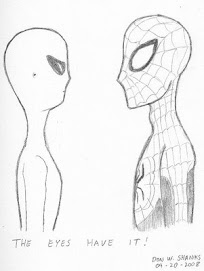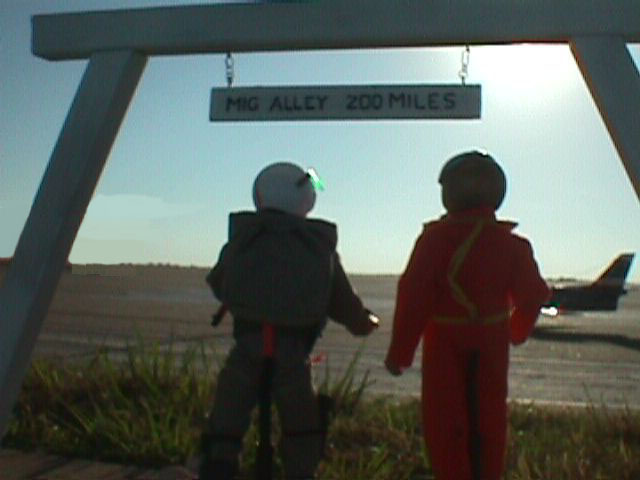 Here are some links to exciting news over on Space.com. Please check them out. And how the solar system Gliese 581 appears in both articles.
Here are some links to exciting news over on Space.com. Please check them out. And how the solar system Gliese 581 appears in both articles.1. "Out There: Billions and Billions of Habitable Planets" by Robin Lloyd and posted on February 19, 2009 ( http://www.space.com/scienceastronomy/090219-explanets-life.html ). In this article, Lloyd interviews author Alan Boss about his new book "The Crowded Universe" (Basic Books) that will be published this month. Mr. Boss talks about classes of extra-solar planets including "Super-Earths." While none have officially been reconized as such, two candidates have been found. One is thought to be orbiting Gliese 581 and discovered in 2007 by Stephane Udry and colleagues on the Geneva Observatory. Carnegie Institution's Paul Butler in 2004 thinks he found one around Gliese 436. That same year, Barbara McArthur thought to have discovered one around 55 Cancri.
Super-Earths depending on where they orbit in the life zone of their solar systems might be too hot or too cold to support life. But there might be some in the middle of the life zone that could support life (i.e. Gliese 581). To find out more, go to Space.com and read that article.
2. "What Finding Alien Life Could Mean for Earth" is an article by Seth Shostak, also posted on February 19, 2009 at Space.com ( http://www.space.com/searchforlife/0902190-seti-finding-life-impacts.html ). So what would you do if it was announched that we had discovered extressitrial life - as in intelligent life forms? What about just the discovery of microbes on Mars if that happens soon? What about if a signal was picked up from Gliese 581. (NOTE: Theres Gliese 581 again folks! Remember that solar system name from now on).
Gliese 581 is a M-class red dwarf star, spectral type M3V, and is 20.3 light years from Earth. It is located in the constellation of Libra. Mass is estimated to be a third of that of our own Sun. It is also the 87th closest known start system to our solar system. Gliese 581 c is believed by some to be a rocky planet with a radius 1.5 times that of Earth. A direct measurement of the radius cannot be taken because the planet is not a transiting planet. With a minimum mass of roughly five times Earth - or one third that of Neptune - Gliese 581 c orbits just inside of the habitable zone of the parent star. orbit around the sun is 13 days! A very quick year indeed.
"Observations of the star also revealed the possibility of a third planet, Gliese 581 d, with a minimum mass of roughly 7.7 Earths, or half a Uranus, and an orbit of 84 Earth days. It orbits on the outer edge of the habitable zone of its star, which makes it a (more - my words) potential candidate for being able to support life." from Wikipedia on Gliese 581.
3. "Plate Tectonics Could Be Essential for Alien Life" by Lee Pullen, posted on Space.com on February 19, 2009. ( http://www.space.com/scienceastronomy/090219-am-plate-tectonics-life.html ). Plate tectonics is the process of continents on the Earth drifting and colliding, scraping together, mountain ranges being formed and earthquakes tearing the land apart to form oceans, etc. It makes for a dynamic and ever-changing world, by Lee Pullen asks if it should be a factor in our search for life elsewhere in the universe? The director of the German Space Research Centre Institute of Planetary Research and chairman of ESA's scientific advisory committee - Tilman Spohn thinks so.
Up till now, it was thought that the best place to look for life would be in the "habitable zones" around other stars. Temperatures where it is suitable for liquid water to remain on the planet and not be boiled away by the star it orbits. Nor too far out for it to be cold enough that it is totally frozen, sorta like Europa.
Plate tectonics help generate a magnetic field by convention of Earth's partially molten core. It is the magnetic field that protects life on Earth by deflecting the solar wind. Not only would an unimpeded solar wind erode our planet's atmosphere, but it also carries highly energetic particles that could damage DNA. Lack of such actions on Venus contributed to its runaway greenhouse effect - and thus, that planet's hot temperatures it has today.
The problem scientists have with understanding such plate tectonics from orbit around our own planet is that it is very hard to sense such a "Biosignature." At least with our current technology.
___
Ref. link on Wikipedia about Gliese 581 ( http://en.wikipedia.org/wiki/Gliese_581 )








+033.jpg)
No comments:
Post a Comment